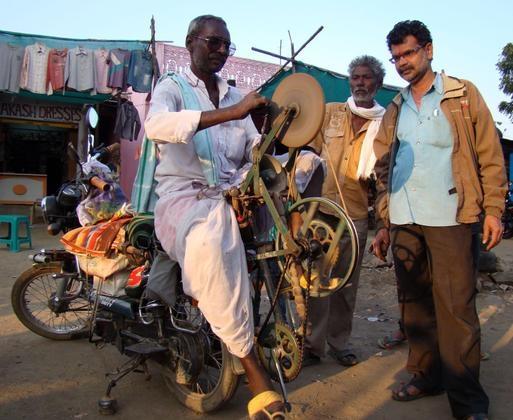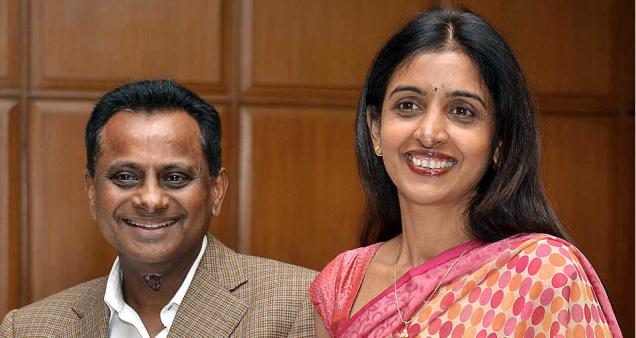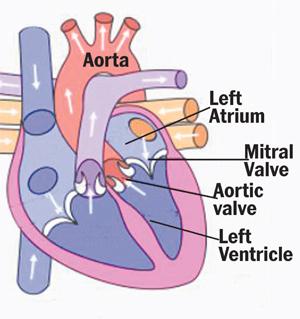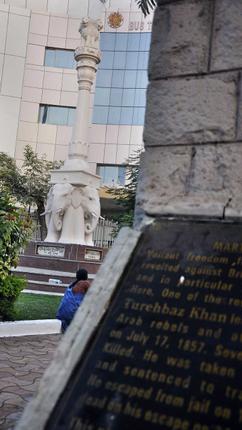A volley ball enthusiast, ever-learning photographer, avid reader of science-related articles, ardent blogger and a passionate father would be too few words to describe Syed Maqbool Ahmed, who is presently heading the Central Instrumentation Laboratory of the University of Hyderabad, where he oversees the day-to-day functionings.
Perhaps the description that instantly draws eyeballs to him would be of his association with India’s successful Mars Orbiter Mission, Mangalyaan. Ahmed is the person who developed a quadrupole-based mass spectrometer, CHACE (Chandra’s Altitudinal Composition Explorer), which was used in India’s mission to the moon, Chandrayaan-1, which discovered water there. An upgraded variant of CHACE, named MENCA (Mars Enospheric Neutral Composition Analyser), is aboard Mangalyaan.
The 53-year old Principal Scientific Officer is known for his passion for science. Having worked at NASA’s Jet Propulsion Laboratory in the US earlier (1994-96) and with ISRO’s Chandrayaan-1 project, Ahmed is a content and accomplished scientist who acknowledges the role of destiny and his teachers in his success.
Ahmed was the project manager of the team of scientists who, as part of the Moon Impact Probe (MIP) mission, developed an indigenous science payload called CHACE, which detected the presence of water on the Moon in November 2008.
Hailing from a middle class family in the remote village Alampur in Mahabubnagar district of Telangana, Ahmed went to Hyderabad for higher studies after completing his schooling in the Telugu medium. “My family, comprising five brothers and three sisters, wanted me to become an Engineer due to obvious reasons of poverty. I gave the EAMCET entrance test thrice and failed each time. That was a big jolt in life, but my aspirations were alive,” says Ahmed.
Back then, he had no passion for Science. After BSc Honours from New Science College in the city, the biggest turnaround happened in his life when he gave the interview for MSc Physics at University of Hyderabad in 1982. “Out of the 30 faculty members in the Physics department, 28 were US returned. In the interview, I could barely understand the questions due to the complex language,” recalls Ahmed.
“AK Kapur sir in the panel understood my difficulty and started asking me questions in Hindi and translated others’ questions too. The panel was happy and I got through. Had he not done that, I would neither have got through nor have realised my passion for Science. Such teachers of exceptionally high standards are hard to find,” says Ahmed.
Soon after his postgraduation, while his parents wanted him to go to the Gulf to earn a living, he decided to join Physical Research Laboratory (PRL), Ahmedabad for a PhD in 1985. “I had to literally fight with my siblings to pursue my PhD and I had to choose PRL over two IITs because of a few hundred rupees extra I would receive towards fellowship,” quips the scientist.
He went on to complete his PhD in Simulation of Planetary Atmosphere or Laboratory Astrophysics in 1990 and joined the Institute for Plasma Research (IPR), Gandhinagar, in 1992 and continued to work as Associate Professor, till 2004. During a sabbatical in 2001-02, he was engaged with the Swiss Federal Institute in Switzerland.
Ahmed joined ISRO’s Chandrayaan project in 2005 and developed a quadrupole-based mass spectrometer, CHACE, which worked successfully in India’s Moon mission. He left ISRO at the age of 46 when he found about a mysterious disease that had infected his daughter. The same year, he joined Central Instruments Laboratory of University of Hyderabad as Principal Scientific Officer.
For him, life has been driven by serendipity. “ISRO happened to me by chance. It was a coincidence when I met Prof R Sridharan, Director of Space Physics Lab (SPL). He took me to the Chief, Madhavan Nair, who handpicked me from Department of Atomic Energy (IPR comes under this department) to Department of Space. This was incredible,” recollects Ahmed.
Acknowledging the contributions of his teachers in his life, Ahmed, presently, apart from heading CIL, holds regular talks on Indian space programmes and also conducts training sessions for Science teachers.
“Schools have to ensure Science is taught with passion. The introduction of the subject is very important. It is very difficult to capture students’ attention for more than half an hour. I try to link the subject to day-to-day activities,” he points out.
He believes a bit of Psychology and sequencing of dosage where teachers ensure students understand the basics first before moving on to bigger things too is important in teaching.
“Students today are much aware of things around them. When they ask me well-prepared questions, I am forced to say I don’t know,” says Ahmed, who believes teachers need to be honest and prepared to bring their experiences and observations from life into the classroom.
According to him, India has failed to attract the best minds into research. “The reason US prospers in Science and research is because they have attracted the best minds and are providing incentives. Our people are doing programming at the same time,” he laughs.
On the CHACE-turned-MENCA, he offers, “It is a very sensitive instrument and I am confident that we will be the first to locate water on Mars,” says the proud scientist, who has been blogging about Mangalyaan for the past 18 months.
Rahul.v@newindianexpress.com
source: http://www.newindianexpress.com / The New Indian Express / Home> Education> Edex / by Rahul V. Pisharody / Hyderabad – October 13th, 2014






